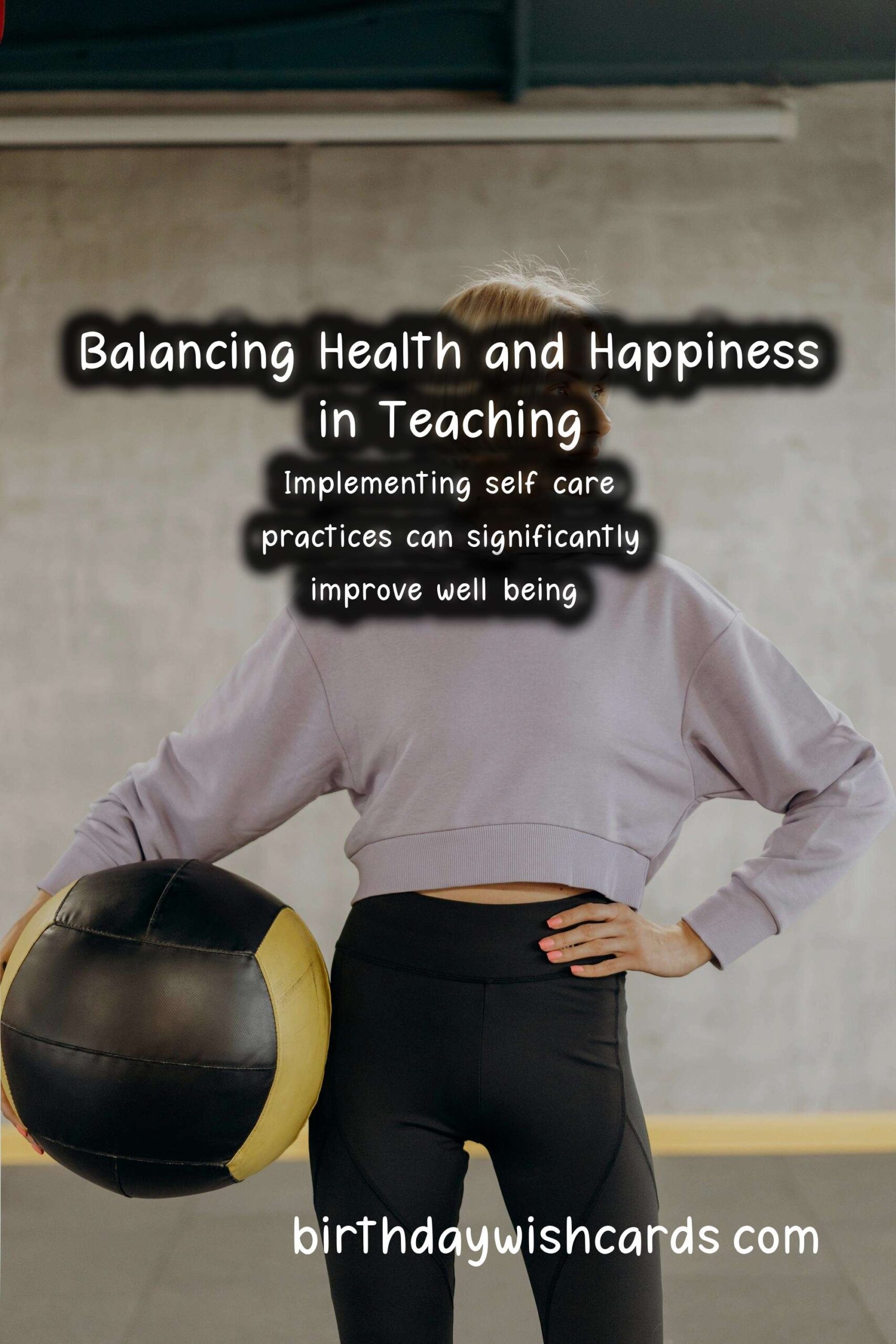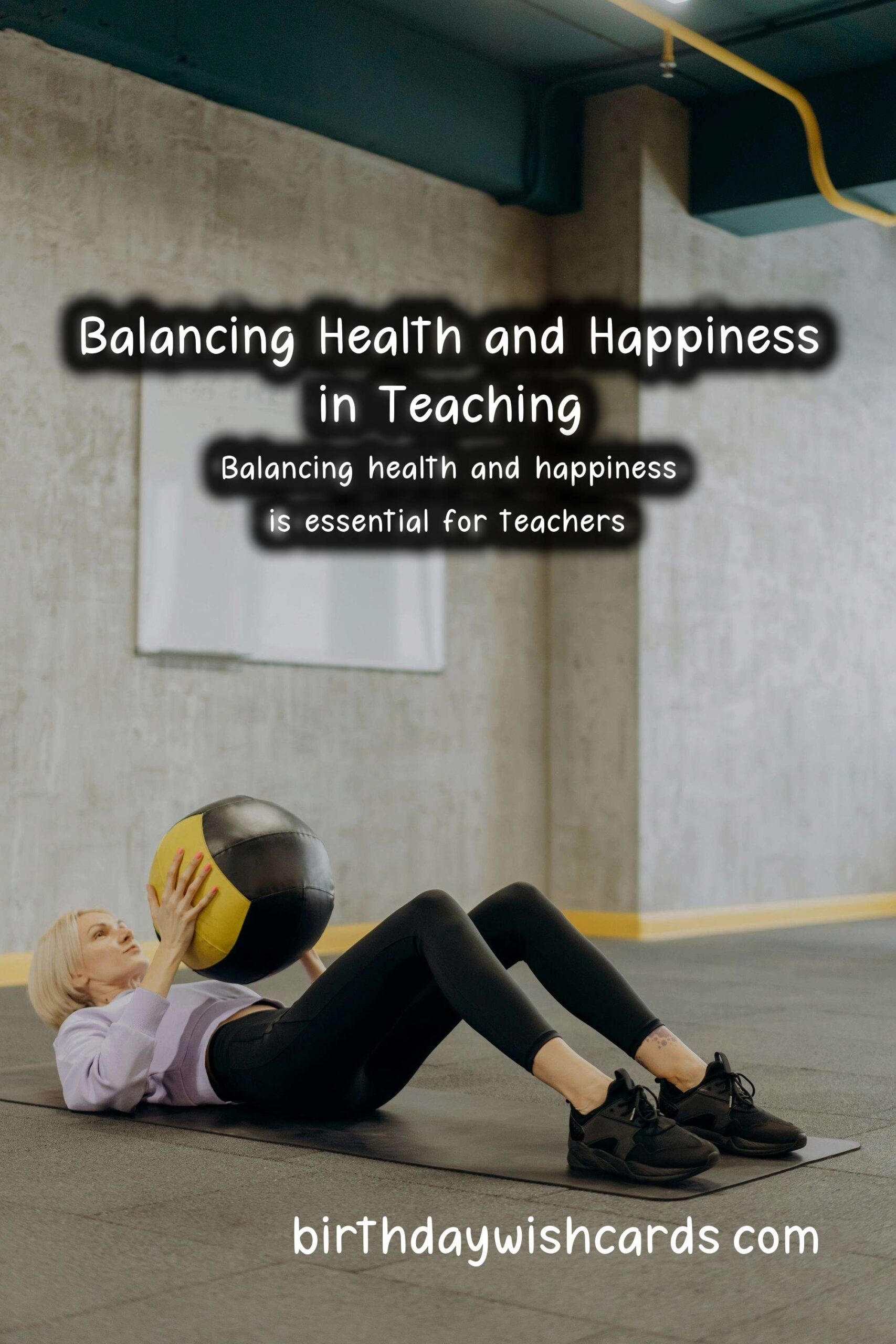How to Balance Health and Happiness in Teachers
How to Balance Health and Happiness in Teachers
Teaching is a noble profession that requires dedication, patience, and a passion for shaping the lives of students. However, the demands of this profession can often lead to stress and burnout, making it essential for teachers to find a balance between their health and happiness. In this article, we will explore various strategies that educators can implement to maintain this balance.
The Importance of Health and Happiness
Health and happiness are interconnected. When teachers are healthy, they are more likely to be happy, and vice versa. Maintaining physical health allows teachers to have the energy and stamina needed for their demanding roles, while happiness contributes to better mental health, leading to improved job satisfaction.
Recognizing the Signs of Burnout
Understanding the signs of burnout is crucial for teachers to address their mental well-being. Common indicators include:
- Exhaustion and fatigue
- Reduced enthusiasm for teaching
- Feelings of inadequacy
- Increasing irritability
By recognizing these symptoms early, teachers can take proactive steps to prevent complete burnout.
Self-Care Practices for Teachers
Implementing self-care practices is essential for maintaining both health and happiness. Here are several effective strategies:
1. Prioritize Physical Health
Physical health is foundational to overall well-being. Teachers can engage in regular exercise, eat a balanced diet, and ensure they get enough rest. Simple activities like walking or yoga can make a significant difference.
2. Connect with Colleagues
Building a support network among fellow teachers can combat feelings of isolation. Regularly sharing experiences and tips can foster a sense of community, providing emotional support and camaraderie.
3. Set Boundaries
It’s important for teachers to set clear boundaries between work and personal time. By establishing specific hours for work-related tasks, teachers can ensure they have time to unwind and engage in personal interests.
4. Practice Mindfulness and Relaxation Techniques
Practicing mindfulness through meditation, deep breathing, or even simple moments of reflection can help teachers manage stress. Taking time each day to engage in relaxation techniques can significantly enhance mental clarity and emotional health.
Cultivating a Positive Classroom Environment
Creating a positive classroom environment not only benefits students but also contributes to the teacher’s happiness. Consider the following:
1. Foster Relationships
Building strong relationships with students can lead to a more enjoyable teaching experience. When teachers show they care, students are likely to respond positively, creating a supportive atmosphere.
2. Incorporate Joyful Activities
Integrating fun and engaging activities into lessons can rejuvenate both teachers and students. Learning through games or interactive projects can create a vibrant classroom dynamic.
3. Encourage Student Autonomy
Providing students with choices in their learning fosters engagement and responsibility. When students are more involved, teaching becomes less of a chore and more of a rewarding experience.
Finding Work-Life Balance
Achieving a successful work-life balance is a continual process. Here are some tips:
1. Time Management
Effective time management can reduce stress significantly. By prioritizing tasks and using tools like planners or digital calendars, teachers can ensure they meet professional obligations while still carving out personal time.
2. Limit After-School Commitments
While involvement in extracurricular activities is important, overcommitting can lead to burnout. Teachers should carefully assess which commitments align with their values and energy levels.
3. Find Hobbies Outside of Work
Engaging in hobbies unrelated to teaching can be a great way to recharge. Whether it’s painting, gardening, or volunteering, spending time on personal interests can boost overall happiness.
Seeking Professional Help
If feelings of stress, anxiety, or depression become overwhelming, seeking professional help is a strong step. Therapists or counselors can provide valuable coping strategies and support tailored to individual needs.
In conclusion, balancing health and happiness is vital for teachers to thrive in their careers. By implementing self-care practices, fostering a positive classroom environment, and seeking help when needed, educators can cultivate a fulfilling teaching experience that benefits both themselves and their students. Remember, a happy and healthy teacher makes for a happy and healthy classroom!
Balancing health and happiness is essential for teachers.
Implementing self-care practices can significantly improve well-being.









#Health #Happiness #TeacherWellness #WorkLifeBalance #SelfCare






